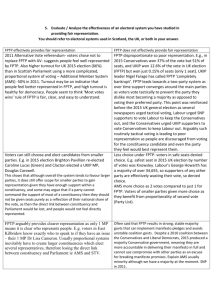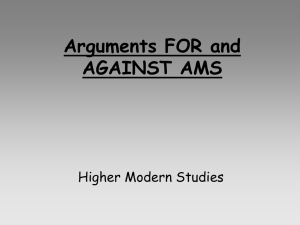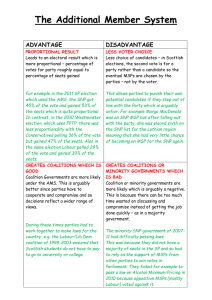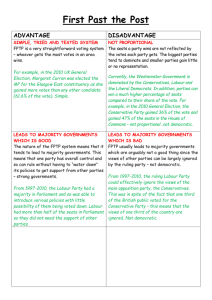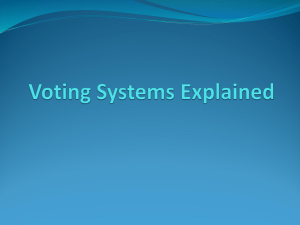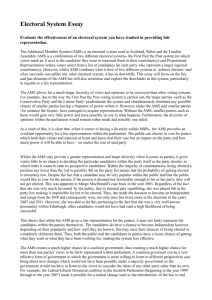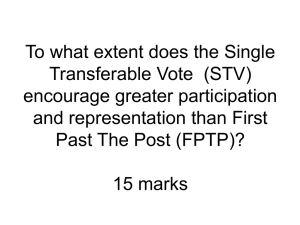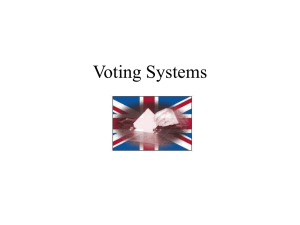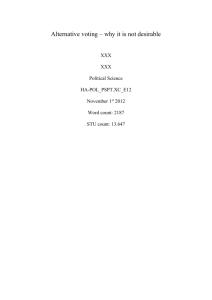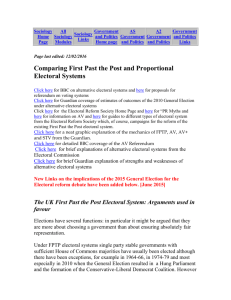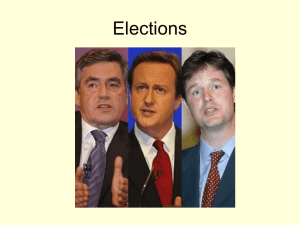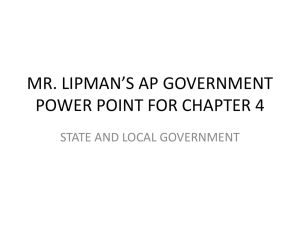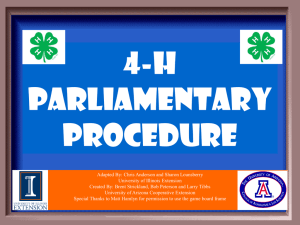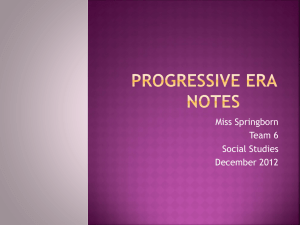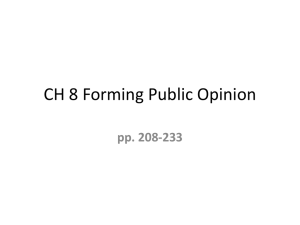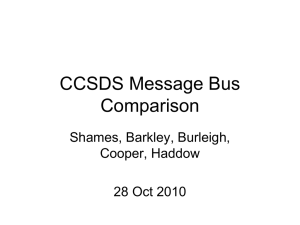AMS v FPTP responsive to the will of the people and choice
advertisement
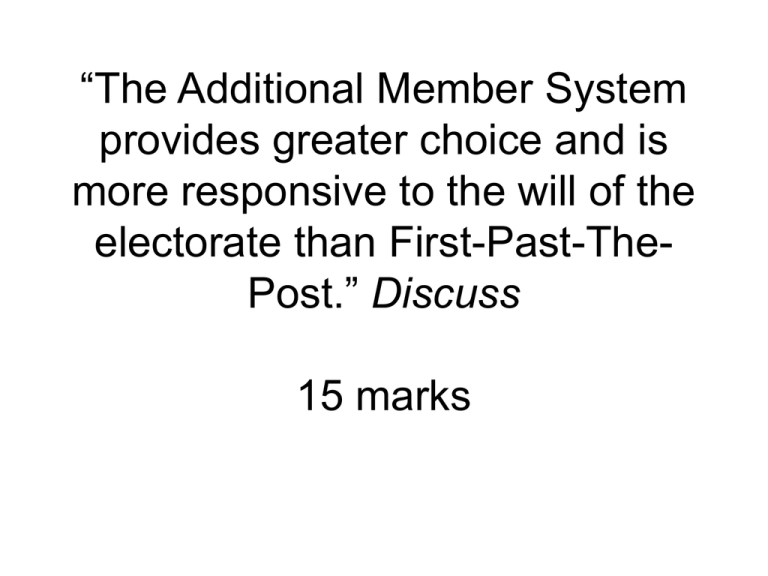
“The Additional Member System provides greater choice and is more responsive to the will of the electorate than First-Past-ThePost.” Discuss 15 marks Warning! The following slides do not display a whole essay. Rather they are examples of paragraph structure that can be used when writing your essays. Important missing parts are the introduction and conclusion – your essays would always have these! Key: Blue – introduce your point Green – develop/explain your point Pink – give examples to back up your point However, whereas, on the other hand, in comparison to …flag up the introduction of a balancing argument to the marker Blue underlined – introduction of balancing point Green underlined – explanation/development of balancing point Pink underlined – examples to back up balancing points Red – analysis: relate your points directly back to the wording of the question. Draw mini conclusions in relation to the question. AMS is more responsive to the will of the people because it is roughly proportional. The list MSPs ‘top up’ the constituency MSPs to make the overall result within a region approximately in line with the wishes of the electorate. In the 2011 Scottish Parliamentary elections Labour received 3 ‘top up’ MSPs to reflect its level of support across the North East region as it received 44,000 in the 2nd vote. Whereas FPTP produces a disproportionate result. The two main parties have concentrated support in certain areas so win constituencies and seats. Smaller parties with less concentrated support lose out under FPTP. For example, in 2005 Labour received 36% of the vote but 55% of the seats. The Lib Dems only received 10% of the seats with 22% of the vote. This shows AMS is more responsive to the will of the people as the composition of parliament will more closely represent the wishes of the electorate as it has an element of proportionality unlike FPTP. AMS offers voters more choice. With AMS voters receive 2 votes – one for a candidate and one for a party. A voter may choose to vote for the Liberal Democrat candidate in the constituency vote but vote Green in the party vote. However, with FPTP voter choice is limited. Using FPTP a voter only has one vote for a candidate. For example, in the 2010 UK General Election in the Banff and Buchan constituency, voters could only choose one candidate from a list of five which included one candidate from each of the Labour, Conservative, Lib Dem and the BNP parties. This shows AMS gives voters more choice as they have two votes instead of one as is the case with FPTP. It could be argued FPTP is more responsive to the will of the people as it usually produces a majority government. This means the government can usually get its bills voted through. For example, in 1997 and 2001 the Labour party received a clear mandate to govern with landslide majorities of 179 and 167 seats respectively. It was able to deliver on constitutional change by setting up a Scottish Parliament – a key manifesto pledge. Whereas, AMS usually results in coalition or minority government. Coalitions tend to result in compromise policies that no-one voted for. For example, the graduate endowment fund set up by the Labour-Lib Dem coalition in Scotland. Being able to deliver on the manifesto pledges the people voted for shows FPTP is more responsive to the will of the people than coalition comprises under an AMS election. In the event of an MP dying or resigning, by-elections can be held under FPTP offering more choice to the voter. As the country is split up into constituencies under FPTP the public can easily choose who they would like to replace an MP in their constituency. For example, Iain McKenzie won the Inverclyde byelection to the UK Parliament following the death of Labour MP David Cairns in May 2011. Whereas there is no by-election facility for list MSPs under AMS. The party leadership decides the placing of candidates on the party list. If a list MSP dies or resigns it is the next person on the list who takes up the seat. For example, when Conservative MSP Mary Scanlon stood down as a list MSP for the Highlands and Islands region in 2006, Dave Petrie took up the seat as he followed Scanlon on the party list. This shows voters have much more choice over who their representatives are under FPTP in by-elections compared to AMS where the party leadership decides.
